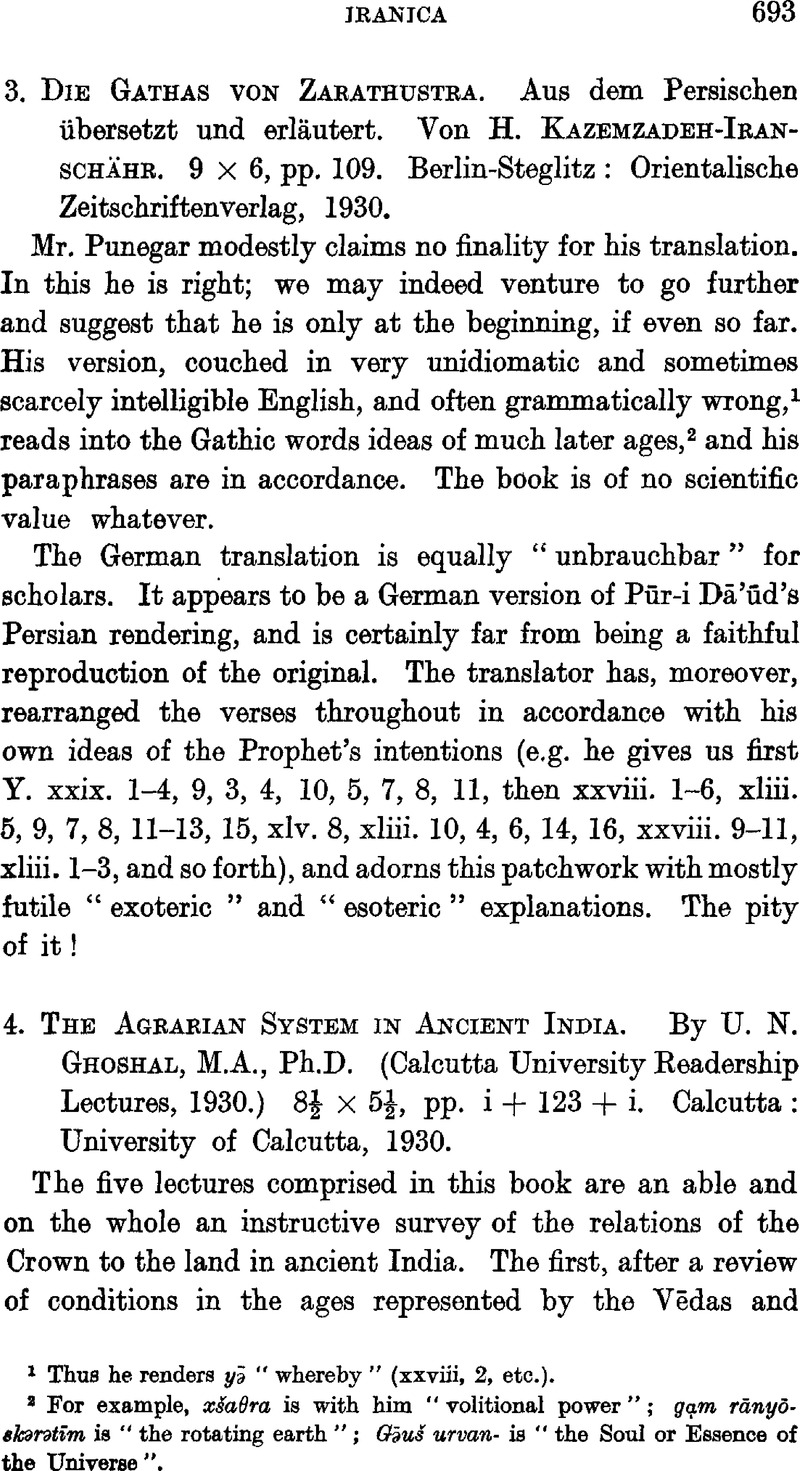No CrossRef data available.
Article contents
Iranica - 4.The Agrarian System in Ancient India. By U. N. GhoshalM.A., Ph.D., (Calcutta University Readership Lectures, 1930.) 8½ × 5½, pp. i + 123 + i. Calcutta: University of Calcutta, 1930.
Published online by Cambridge University Press: 15 March 2011
Abstract

- Type
- Notices of Books
- Information
- Copyright
- Copyright © The Royal Asiatic Society 1931
References
page 694 note 1 In passing we may also note a slip: on p. 65 the Cāulukyas of Gujarat are called the “Chalukya dynasty”.
page 694 note 2 In my notice of DrGhoshal's, Contributions to the History of the Hindu Revenue System (JRAS. 1931, p. 165)Google Scholar I inadvertently misrepresented him by stating that he had “wholeheartedly” accepted the opposite view of Dr. Breloer. In this I was mistaken, and I regret the error.
page 694 note 3 On Hiuen Tsang's evidence see particularly DrGhoshal's, own remarks in his Contr. to the Hist, of the Hindu Rev. Syst., pp. 225 fGoogle Scholar.
page 695 note 1 “By the end of the fourth century before Christ, it seems, the royal farms let out to the cultivators on lease had become so important that, according to one version of Megasthenes' description they formed the whole territory of the State” (p. 78).
page 696 note 1 That in Vedic times the arable lands of the Aryan village were held in private ownership, as Dr. Ghoshal maintains, seems to me disputable; it is equally possible that they were held in joint ownership by the heads of households, but that each of the latter owned likewise a patch or two of private land adjoining his house, just like the piḷaikkadai and kollai of the Tamil joint-village.
page 696 note 2 Such a claim was admitted even by the recalcitrant Brahmans; see pp. 101 ft. of the present work.
page 696 note 3 Cf. Mahābh., Śanti-p., lxxii, 10 ff., and Powell's, BadenLand Systems of British India, iii, p. 158Google Scholar.




